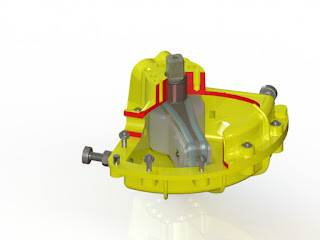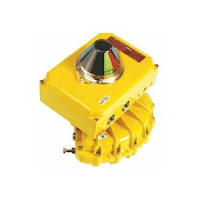The Kinetrol rotary vane design is based upon a single moving part which eliminates additional parts required to convert linear motion to rotary motion. This simple and innovative design provides a highly accurate and extremely reliable actuator for operating valves, drives and dampers, and is perfectly suited for the most demanding process control applications. For more information visit www.kinetrolusa.com or call 972-447-9443.
Exploring the Superior Features of Vane Actuators in Contrast to Rack & Pinion and Scotch-Yoke Designs
Kinetrol Rotary Vane Actuators. Simply the Best.
Kinetrol rotary vane actuators have a well earned, and long established, reputation for performing where other pneumatic actuators fail. With outstanding cycle life, smooth and precise operation, and an environmentally rugged design, Kinetrol actuators are "simply the best" quarter-turn valve and damper actuator on the market today. Period.
For more information, contact Kinetrol USA. Call them at 972-447-9443 or visit their website at https://kinetrolusa.com.
WEFTEC 2017
The conference provides insights and products for water and wastewater technologies including:
- Collection Systems - Management, operations and maintenance, infrastructure, overflow reduction, wet weather planning, watershed approaches, and regulations
- Energy Conservation and Management - Resource recovery, combined heat and power, biogas optimization
- Membrane Technologies - Application in wastewater and water reuse, innovations, enhanced performance, regulatory compliance
- Plant Operations and Treatment - Innovations, technologies, processes, and proven solutions in water and wastewater treatment; including nutrient removal and odor control
- Regulations - CMOM/SSO Rules, TMDL/Watershed Rules, Nutrient Trading, and NPDES Phase II
- Research - Leading edge process applications in water and wastewater treatment and recent developments
- Residuals & Biosolids - Incineration, disposal, reuse through land application, research, regulations, politics, and public perception
- Stormwater - Treatment, green infrastructure, wet weather management, modeling
- Utility Management - Asset Management and financial planning for infrastructure, technology, regulatory compliance, and security; including environmental management systems (EMS)
- Water Reuse/Recycling - Research, regulations, emerging technologies, proven processes
- Water Quality & Watershed Management - Stormwater, wet weather, and watershed issues
McCormick Place | Chicago, IL
Exhibition: October 2 - 4, 2017
Hours: 8:30 am - 5:00 pm daily
COME VISIT US AT BOOTH 4136
Integral Vane-Shaft Actuators Best for High Cycle Rate and Modulating Applications
 |
| Internal view of vane actuator. Note the single piece vane/shaft design. |
Why? Because of the mechanical problems inherent to the use of gears.
According to Wikipedia, "A gear or cogwheel is a rotating machine part having cut teeth, or cogs, which mesh with another toothed part to transmit torque."
- Friction
- Fretting Wear
- Backlash
"Fretting wear" is caused by the repeated cyclical rubbing between two surfaces (gears in the case of scotch yoke or rack and pinion actuators) and over a period of time, will remove material from one or both surfaces.
Backlash happens when gears change direction. It is caused by the gap between the trailing face of the driving tooth and the leading face of the tooth behind it. The gap must be closed before force can be transferred in the new direction, hence the phenomena of backlash. This is also sometimes referred to as "slop".
For any questions about applying the most appropriate type of actuator for any valve or damper application, call Kinetrol at 972-447-9443 or visit http://www.kinetrolusa.com.
A Basic Description of Valve Actuators
 |
| Automated plug valve with actuator, limit switch, and indicator. |
Troubleshooting & Set Up Guide for Kinetrol EL Positioners
 |
| Kinetrol EL Positioner |
In terms of response and accuracy, the EL Positioner is arguably one of the best electro-pneumatic positioners in the world, particularly when used in tandem with a Kinetrol vane actuator.
The document below provides an illustrated troubleshooting and set-up guide for the EL electro-pneumatic positioner and is available to support the all the units installed in chemical, petro-chemical, water treatment, power generation and other applications across the world.

